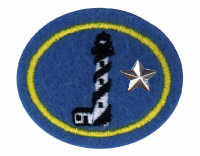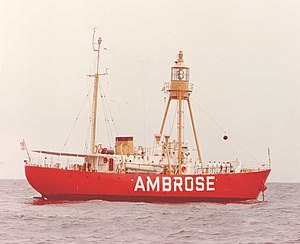Especialidades JA/Faros - Avanzado/Respuestas
Nivel de destreza
3
Año
2007
Version
13.01.2025
Autoridad de aprobación
Asociación General
1
Para consejos e instrucciones, véase Faros.
2
- a. Fotografías, tarjetas postales o dibujos de 25 faros. Las etiquetas deben incluir una breve descripción de: localización, año de construcción, estatus activo/no activo y orden del lente.
- b. Escribir una breve historia de los faros anteriores.
- c. Incluir dibujos/fotografías y respuestas de todos los requisitos para esta especialidad en su álbum de recortes.
3
- a. Nombre del señor que lo inventó
- b. País de donde ha venido
- c. Año desarrollado.
3a) Name of the gentleman that invented it: Augustin-Jean Fresnel (pronounced fray-NELL) is most often given credit for the development of this lens for use in lighthouses.
4
- a. Mostrar cómo los prismas se utilizan para concentrar la luz
- b. Mencionar su propósito
- http://science.howstuffworks.com/question244.htm (External link on how a Fresnel Lens works)
- http://www.lanternroom.com/misc/freslens.htm (Look at figure #3 for how the prisms/bull's eye reflect light)
5
You can get a nice diagram/chart at the Library of Congress.
5a
5b
6
7
Daymark
Lighthouses have distinguishing daymarks. No two lighthouses are exactly alike. This way, ships and sailors can determine their location. For example, if you see a red lantern and black and white spiral stripes, you will know that you are off the coast of St. Augustine.
Nightmark
In similar fashion, the signature or pattern of light at night is the nightmark. By viewing this distinctive signature, sailors can tell their location even in the dark.
- Pigeon Point Light Station: Flashing white 10s
- Point Bonita Lighthouse: Occulting white once every 4s
- Ponce de Leon Inlet Light: fixed light (original)
- Cape Hatteras Light: Short flash every 7.5 seconds
- Au Sable Light: Flashing white every 6 s
- Fort Washington Light: flashing red
8
A lightship is a lighthouse on a ship. It allows a lighthouse to be put where a lighthouse cannot be built. For example, a lightship may be moored over treacherous reefs, or marking the narrow approaches to a channel. Also, at harbor entrance(s) where lighthouses can not be built or placed in areas too far offshore for a land-based lighthouse's lens to reach.
Here's a link for more information: http://www.nps.gov/history/maritime/ltshipmain.htm
9
A lighthouse keeper is the person responsible for tending and caring for a lighthouse, particularly the light and lens in the days when oil lamps and clockwork mechanisms where used. Keepers were needed to trim the wicks, replenish fuel, wind clockworks and perform maintenance tasks such as cleaning lenses and windows.
Many lighthouse keepers lived in isolated locations. The isolation could cause mental health issues. In a medical emergency they could be far from help. They had to climb towers and could fall. They also served as first responders to shipwrecks in storms which could be dangerous. Traveling over the ocean to and from work also had its hazards.
10
Here's a link to a quote: http://www.whiteestate.org/issues/Drama.html. See pages 6, 17, 18.
Whiteestate.org has a searchable database of Ellen White's writings. Type in lighthouse and see what you find.
11
12
Have Fun! You should have no problems finding a kit to build on the Internet.












